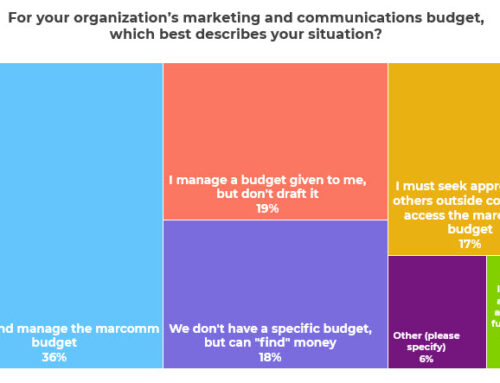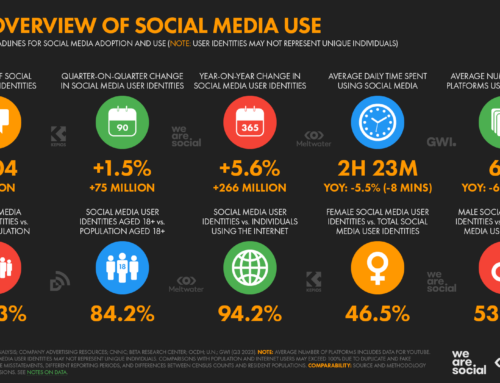
The online search landscape is changing. A November 2023 study by HubSpot highlighted a shift towards social media over search engines for information, especially among younger audiences like Gen Z and Millennials. They go on to share that their Trends report shows 31% of consumers now use social platforms for finding information.
Another report from DataReportal stated that back in 2022, 75% of internet users used social media to research products, look for reviews, and recommendations. And another 27.9% used social media to find inspiration for things to do and buy. All signs and reports point to that number having increased today.
Social SEO, as a result, is now becoming as popular as traditional SEO once was. Unlike traditional SEO, which optimizes for search engines like Google and Bing, Social SEO focuses on making content visible on social platforms. It’s about making our content easier to find and ensuring it shows up in users’ feeds.
The American Marketing Association named Social SEO as one of the top six 2024 trends for marketers. This highlights how important Social SEO is for nonprofits like ours, especially as social media search and AI chatbots become more common.
So, what does optimizing social media platforms for search look like?
Top Tips for Enhancing Social SEO:
- Tailoring content for each social platform.
- Incorporating keywords and phrases relevant to your audience’s search habits.
- Optimizing your social media profiles for SEO.
- Using relevant hashtags to improve discoverability.
- Analyzing and adapting content based on performance insights.
- Using interactive campaigns to engage and inform.
- Optimizing posts for visibility and search relevance.
- Sharing high-quality, shareable content that aligns with your mission.
Now let’s see it in practice for mission-based organizations. Let’s take a look at some examples of Social SEO in action:
Optimizing Profiles for SEO
Example: A homeless shelter nonprofit enhancing its Facebook profile by including keywords such as “homeless support services” and “emergency shelter” in its bio section. They also link directly to their donation page and use a consistent naming convention across platforms to improve their searchability and brand recognition.
Optimizing Posts for Search Relevance
Example: A mental health nonprofit uses Instagram to share content that directly addresses common search queries, such as “how to cope with anxiety.” They include these phrases in their post captions and video content, making their posts more likely to be discovered by users seeking information on these topics.
Tailored Content for Each Platform
Example: A literacy nonprofit can share quick tips on Twitter/X, in-depth articles or long post content on LinkedIn, and visual testimonials on Instagram to connect with different segments of their audience.
Interactive Campaigns
Example: Hosting live Q&A sessions on social platforms to address common queries that come into the organization and encouraging followers to submit questions before, during, and after.
Strategic Hashtag Use
Example: An environmental nonprofit could increase content discoverability and connect with like-minded users by using targeted but somewhat mainstream hashtags such as #PlasticFreeOceans to connect with a targeted audience.
Engaging Visual Content
Example: Sharing compelling stories and images of rescued animals, an animal welfare nonprofit can use Instagram Stories or Facebook Live to boost engagement and visibility.
Community Building Through Engagement
Example: Fostering two-way conversation through comments and shares, to build deeper connections with your audience.
Befriend the Algorithms
The shift towards social media as a primary search tool offers nonprofits an invaluable opportunity to connect with their audience on a deeper level. By leveraging the unique strengths of each social platform and aligning your content strategy with your audience’s search behaviors, your nonprofit can significantly enhance its social SEO. The addition of strategic hashtag use, engaging visual content, and community building through engagement further enriches this approach, ensuring your nonprofit’s message not only reaches but resonates with the right audience.
With every hashtag, every shareable moment, and every community dialogue, we’re not just reaching audiences; we’re inviting them into our story. Stay curious, stay engaged, and let’s make every search a step towards new relationships and achieving your mission.





